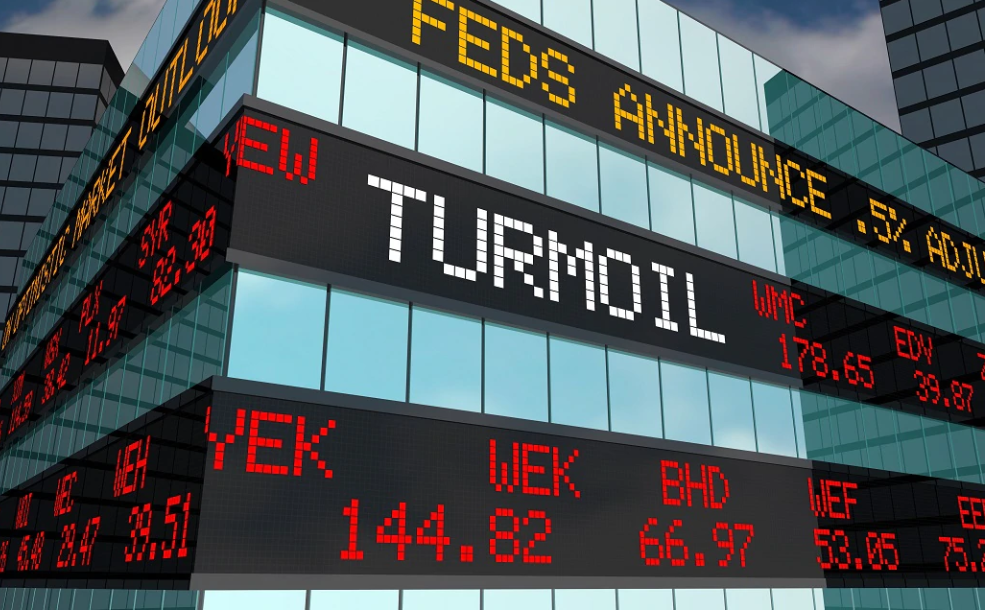Will Gold be the Last Man Standing as Perfect Storm hits Markets?
by Ronan Manly, BullionStar:

From the plunge in European stock markets beginning Monday 24 February, instability and volatility in financial markets across the world has continued to reel for some three weeks now. In fact, the market carnage and turmoil has been progressively intensifying leaving no asset class immune. A generational perfect storm.
Triggered by the rapid spread of the coronavirus COVID-19, and amplified by a massive fall in global oil prices after lack of agreement on OPEC oil production output, the corrections and gyrations across stocks, bonds, foreign exchange, commodities and everything in between are also arguably an overdue market adjustment to years of asset bubbles, volatility suppression and elevated stock prices created by continuous central bank stimulus and interventions.
Ironically, with financial markets addicted to the artificial liquidity of central bank interventions and conditioned to expect continual rescues, the recent market stress has brought out more of the same with calls for stability in the form of central bank stimulus, interest rate cuts and liquidity injections, calls that are being answered and will continue to be answered by responses ovee the last two weeks from the US Federal Reserve, Bank of England and European Central Bank (ECB), culminating in the Fed on the night of Sunday 15 March throwing its entire toolbox of band-aids at the market including interest rate cuts, Treasury purchases (QE), currency swap line facilities coordinated with the other Big 5 central banks. A classic Hegelian case of problem-reaction-solution, with the risk selloff being the problem, ‘investors’ screaming for stability as the reaction, and central banks stepping in to the rescue as the solution using the coronavirus as a be all and end all excuse for intervention.
The Ides of March – EID MAR
The last three weeks have witnessed ever increasing numbers of record breaking financial press headlines in the form of various ‘biggest index points decline since xxxx’, ‘lowest bond yield since xxxx’, ‘largest oil price plunge since xxxx’, where for xxxx you can insert any number of years which witnessed extreme market events such as 2008, 1987, 2001, or 1991. Likewise, with Friday’s US market ramp up in the last 20 minutes before close, you can also add some “biggest index points gain’ headlines.

The key takeaway however is that markets are in turmoil across the board and across the world, and still face huge uncertainty and huge market volatility as they struggle to make sense of future economic growth and the possibility of recessionary scenarios. Futhermore, central bank interventions looks increasingly impotent.
US stock markets are now in official bear market territory, with the leading indices such as the Dow and S&P 500 having each fallen more than 20% from their recent all-time highs. The same goes for equity indices across Europe and Asia. The past week has also seen record lows in US Treasury bond yields across the yield curve, with all yields from 1 month to 30 years under 1% at times, as the flight from risky assets / flight to safety continues. In this environment, will the US Federal Reserve lower its official interest rates to near zero when it meets later this week? Probably it will.
Structurally, the US treasury market has also seen its liquidity and market depth impacted with higher transactions costs and less willingness to trade from market makers. More turmoil which the New York Fed euphemistically calls “temporary disruptions in the market for Treasury securities“.
The list goes on with stress in every type of traded financial asset from European bank shares (such as Deutsche Bank) to money market mutual funds, from the repurchase (repo) market to high yield (junk) debt, from corporate debt (Credit default swap (CDS) insurance costs of non-investment grade corporate debt have also gone off the scale), to the commercial paper market where corporates borrow short-term, and from the oil market to an international shortage of dollars.
Fear vs Reality
VIX, a 30-day forward-looking volatility measure of US stock markets which signals uncertainty and market stress, hit 75 on Thursday and is trading above 57 at the time of writing. Beyond the concern of the actual VIX numbers is the fact that the VIX gauge has been rising steadily and staying at elevated levels this past week, an indication of prolonged uncertainty and continued market stress as captured in the stock option prices which VIX measures. Similarly, the Fear and Greed index, based on a series of US stock and bond metrics is now at the level of extreme fear. See here for details.

US stock markets are now officially in bear market territory, defined as a 20% or more selloff from all time highs in the major equity indices such as the Dow and S%P 500. The Dow Jones Industrial Average (DJIA or Dow) is, as of close of trading Friday 13 March, down 21.47% from its all time high. The Dow is also down 18.75% year-to-date, and it fell 10.36% over the last week. The S&P 500, which fell 8.88% over the last week, is now down exactly 20% from its all-time high, and down 16% year-to-date.
In crypto currencies, the often touted ‘safe haven’ of Bitcoin has notably failed to provide any shelter, with the Bitcoin (BTC) price falling sharply by 33.83% over last week (from 8029 to 5312). Ethereum (ETH) likewise, fell precariously last week losing 38.6% of its value (from 200.65 to 123.23). Bitcoin (BTC) has now lost 26.4% for the year-to-date, , falling from 7221 on 1 January to 5311 on 13 March.
Value Retention
While the classic safe haven of gold has not been immune to the recent price volatility across markets (having fallen 8.6% in US dollar terms last week from its seven year high of US $1695 recorded on 9 March), this fall is due to the fact that perversely, this gold price is established in the derivative (COMEX) and synthetic (London) paper gold markets which do not reflect physical demand and supply for bulion. Still though, the gold price has faired far better than either stocks or cryptocurrencies in all of this volatility, and is still ahead for the year-to-date in US dollars, with a 1.94% return. So on a relative basis, gold is far ahead of both stocks and cryptocurrencies in retaining its value year-to-date.
In other major fiat currencies, gold’s year-to-date return is still noticeably positive, for example + 9.52% in GBP, + 15.68 in AUD, + 7.39% in SGD, and + 3.22% in EUR. In US terms, gold’s 1 year return is still a very strong 18.77%, and over 3 years, the US dollar gold price has returned 26.13%.
Its surprising to many that the gold price has turned back twice in the last two weeks from breaking out above the US $1700 level. All in an environment of collapsing stock markets, general market panic, end of the world scenarios, and now a US national emergency.
Mainstream media reporters have rolled out and regurgitated the usual margin call explanation claiming that unnamed ‘traders and investors’ have had to ‘sell gold’ in order to meet margin calls on their leveraged bets across other asset classes. While there are many problems with this explanation (simplistic, lacking in evidence, fails to discuss the role of gold as collateral, cited every day during 3 weeks when stocks rose as well as fell etc etc), the bigger problem is that these reporters do not address the CFTC positioning of gold futures reports nor the role of bullion banks play in continually shorting the gold market and triggering stops and covering short positions, nor most importantly – the structural flaws in the actual entire gold price discovery process.
Loading...



